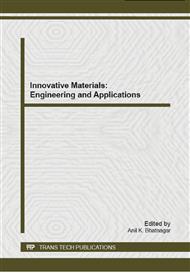p.427
p.433
p.437
p.441
p.447
p.454
p.460
p.464
p.471
Signal Processing of Fluorescent Optical Fiber Temperature Measurement Based on Hilbert-Huang Transform
Abstract:
The technology of fluorescent optical fiber temperature measurement has been used in many fields to accurately measure the variations of temperature, especially in some extreme environment, such as strong electromagnetic interference under, high voltage conditions. Wavelet analysis is the most frequent method used for signal processing in this technology. This method has excellent local characteristics and its precise of processing is high, whereas its result relies heavily on the selection of the wavelet basis, and has certain limitation. In this paper, a novel approach for fluorescent signal processing based on Hilbert-Huang transform is presented. A given signal is decomposed into a collection of intrinsic mode functions (IMF) by empirical mode decomposition, then Hilbert spectral analysis is performed for each of the IMF. According to the difference of signal and noise characteristics, HHT can generate adaptive modal functions and remove the noise from signal effectively, so that the signal to noise ratio can be improved. The result of experiment shows that HHT features convenient usage, fast processing and high resolution in time and frequency domains.
Info:
Periodical:
Pages:
447-453
Citation:
Online since:
October 2014
Authors:
Price:
Сopyright:
© 2014 Trans Tech Publications Ltd. All Rights Reserved
Share:
Citation:


